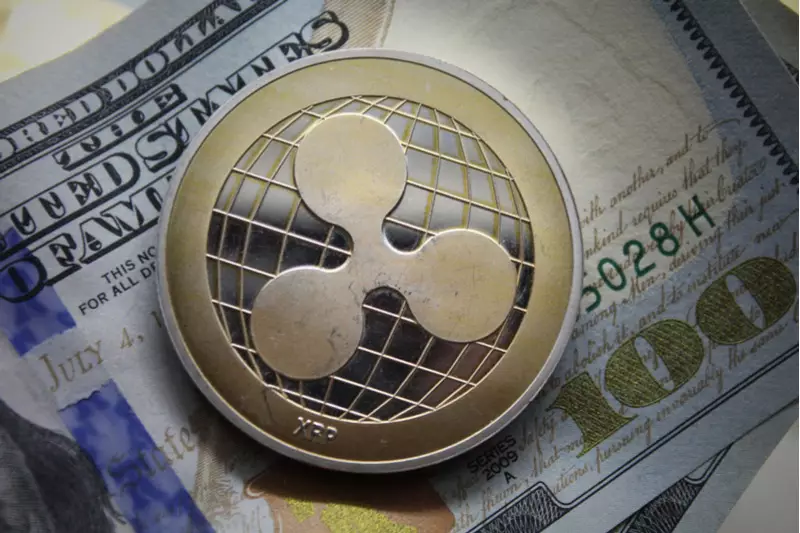The cryptocurrency landscape is in a state of constant evolution, filled with both promising developments and unexpected twists. Recently, significant events surrounding the Shiba Inu project and key figures like Chris Larsen have captured the attention of crypto enthusiasts and investors alike. This analysis will delve into the details surrounding the imminent SHI stablecoin within the Shiba Inu ecosystem, the unexpected actions of Ripple’s co-founder, and the recent activation of long-dormant Bitcoin wallets, shedding light on their implications.
Shiba Inu, often regarded as a meme-based cryptocurrency, is making strides towards establishing itself as a serious player in the decentralized finance (DeFi) space. Lucie, the marketing lead for the project, underscored the significance of the anticipated SHI stablecoin in the Shibarium ecosystem. Initially proposed by Ryoshi, the creator of Shiba Inu, in 2021, SHI is designed to act as a stable and decentralized currency aimed at promoting better liquidity and broader user engagement.
Despite the excitement surrounding its development, it’s crucial to note that the SHI stablecoin is still under construction. As Lucie pointed out, the project team is committed to ensuring robust infrastructure to underpin SHI’s stability and utility. Moreover, pegging SHI at $0.01 raises questions regarding the mechanisms planned to maintain this peg. The team’s focus on liquidity and fostering user engagement suggests that they are aware of the liquidity challenges often faced in the volatile crypto space and want to mitigate these risks.
The successful launch of SHI could have far-reaching implications for the Shiba Inu community. By strengthening the ecosystem, it may attract new users and investors who seek a more stable investment vehicle amidst crypto’s notorious volatility. Overall, the SHI stablecoin represents a significant opportunity for Shiba Inu to redefine its identity from a meme coin into a robust platform for decentralized transactions.
Chris Larsen’s BTC Transfer: Speculations and Concerns
In a surprising twist, Chris Larsen, a co-founder of Ripple, recently emerged from a prolonged period of inactivity concerning his crypto wallet. After 11 years of dormancy, Larsen executed a staggering transfer of 50 million XRP, valued at over $29 million, stirring a whirlwind of speculation within the cryptocurrency community. Initial reactions ranged from curiosity about potential liquidity use in Ripple’s On-Demand Liquidity (ODL) service to concerns over whether the transfer might indicate a looming sell-off or perhaps even a security breach.
Such movements in established figures’ wallets can often lead to market fluctuations, given that community members scrutinize every action for potential insider knowledge. In this instance, after the XRP was directed toward exchanges like Binance, Bittrex, and Coinbase, the community speculated about Larsen’s motivations. While it’s crucial to remember that individuals in the crypto space have diverse motivations outside just trading strategies, Larsen’s silence on the matter has only exacerbated concerns.
The lack of clarity surrounding these large-scale transfers raises essential questions regarding transparency in the cryptocurrency market. In a domain often criticized for its speculative nature, transparency is key to maintaining confidence among users. As Larsen’s magnets for attention diminish due to his non-commentary, many investors remain cautious, wondering whether this will lead to unintended consequences within the Ripple network.
Meanwhile, the cryptocurrency sphere is also witnessing a notable trend: the reactivation of ancient Bitcoin wallets. Data from Whale Alert indicates that several wallets dormant for over a decade suddenly became active again, with some transactions involving significant amounts of Bitcoin, including a wallet containing 28 BTC worth approximately $1.8 million. Other transactions have triggered discussions speculating whether this resurgence indicates the actions of Satoshi Nakamoto, the elusive creator of Bitcoin, or if it springs from entirely different motives.
The recent influx of old wallets coming back to life could signal a variety of scenarios. Some theories speculate that potentially long-lost passwords are finally being remembered, allowing owners to re-access their digital gold. Conversely, there are fears of hacks or illicit activities, which often cloud a technology’s reputation, especially for a revolutionary asset like Bitcoin.
The cryptocurrency space is rife with speculation and drama, with the Shiba Inu community eagerly awaiting the launch of the SHI stablecoin, while Chris Larsen’s unexpected activities cast shadows over trust and transparency in the market. Additionally, the revival of dormant Bitcoin wallets adds another layer of intrigue, reminding us of the technology’s rich history and the complex narratives that feed into its evolving journey.

